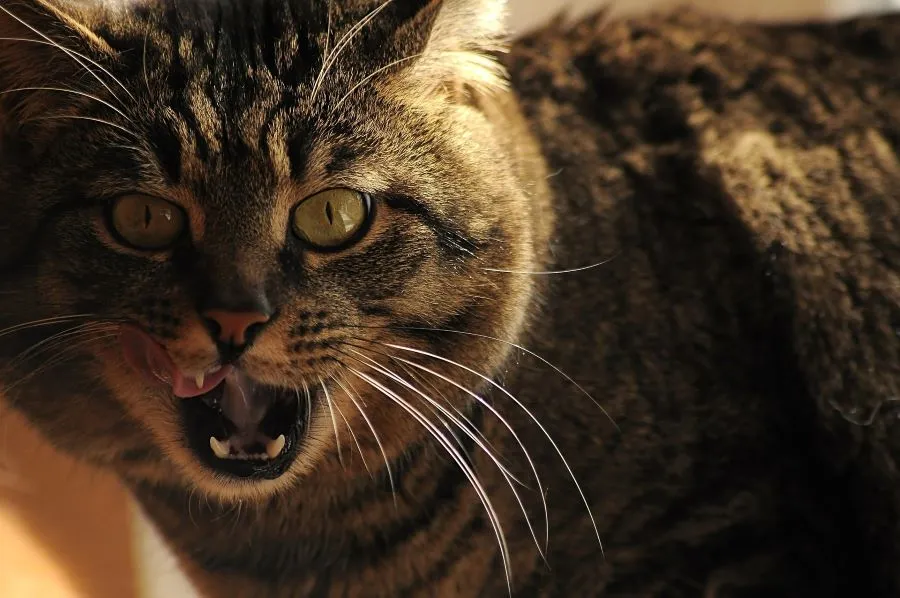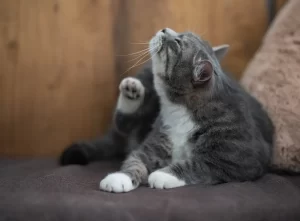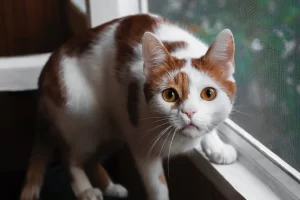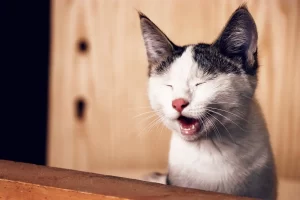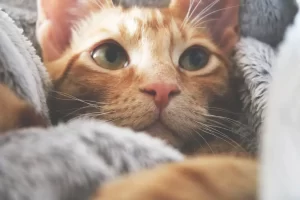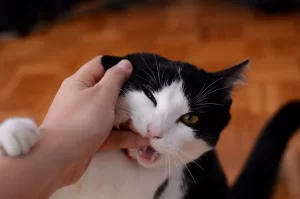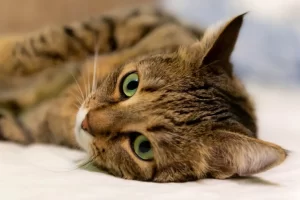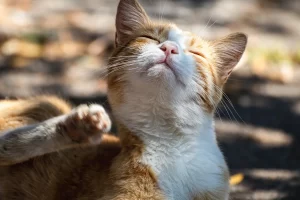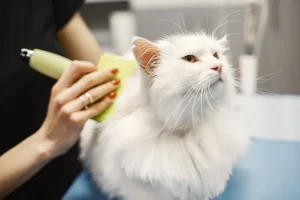Cat vomiting and not eating can be concerning for cat owners, as it may indicate an underlying health issue. Cats may vomit for various reasons, and when accompanied by a loss of appetite, it can signal a potential problem with their digestive system or overall health. Understanding the possible causes and treatments for cat vomiting and not eating is essential for providing appropriate care and seeking timely veterinary attention. In this article, we will explore the common causes of cat vomiting and not eating, along with possible treatments and home care strategies to help cat owners better understand and manage this worrisome condition.
Table of Contents
ToggleUnderstanding Cat Vomiting And Not Eating
One common cause of cat vomiting is dietary indiscretion, where cats may vomit if they eat too quickly, overeat, or consume something that upsets their stomach, such as spoiled food or foreign objects. Another common cause is the formation of hairballs, as cats groom themselves frequently and the accumulation of hair in their stomach can lead to vomiting.
Gastrointestinal inflammation, also known as gastritis or enteritis, can also cause vomiting in cats. This can be triggered by various factors, including infections, dietary changes, or food allergies. Gastrointestinal obstruction, such as from ingesting a foreign object or developing a tumor, can also cause cats to vomit.
Furthermore, certain medical conditions, such as kidney disease, liver disease, pancreatitis, or hyperthyroidism, can lead to vomiting in cats. Infections, such as viral, bacterial, or parasitic infections, can also cause vomiting.
Loss of appetite, or anorexia, is another concerning symptom in cats that may accompany vomiting. Cats may lose their appetite if they are experiencing stomach discomfort, pain, or inflammation, which can be caused by gastrointestinal issues. Underlying systemic illness, such as organ disease, infections, or hormonal imbalances, can also cause a decrease in appetite in cats. Stress or anxiety, dental issues, and certain medications or treatments can also lead to loss of appetite in cats.
Differentiating Vomiting Colors and Consistencies
The color and consistency of vomit in cats can provide important clues about the potential causes and severity of the condition. White foam may indicate an empty stomach, yellow or green bile may suggest digestive issues, and clear liquid vomit may indicate stomach fluid without food (Read more about Cat Vomit Color Chart and Decoding Cat Vomit Color). Further evaluation by a veterinarian may be necessary for proper diagnosis and treatment, considering other symptoms and overall health of the cat. For more information, see the Different Types of Cat Vomits.
Cat Vomiting White Foam and Not Eating
Common Causes:
Cats may vomit white foam and refuse to eat due to various reasons. One common cause is the formation of hairballs in the stomach, which can lead to irritation and vomiting. Indigestion or gastric irritation from consuming inappropriate or spoiled food, rapid eating, or dietary changes can also cause cats to vomit white foam and lose their appetite.
Symptoms to Watch For:
Cat owners should be vigilant for signs that may indicate a more serious issue when their cat vomits white foam and refuses to eat. Lethargy, weakness, dehydration, changes in behavior, or reluctance to move or play may be indications of an underlying health problem that requires veterinary attention.
Home Care Tips:
There are some practical steps cat owners can take at home to help their cat when they are vomiting white foam and not eating. Withholding food for a short period, usually 12 to 24 hours, to allow the stomach to settle may be beneficial. Afterward, offering small and frequent meals of a bland diet, such as boiled chicken or rice, can help soothe the stomach and encourage eating. Providing clean and fresh water at all times is also essential to prevent dehydration.
When to Seek Veterinary Care:
It is important to consult a veterinarian in certain circumstances when a cat is vomiting white foam and not eating. If the vomiting persists for more than 24 hours, becomes more frequent, or is accompanied by other concerning symptoms such as blood in vomit, abdominal pain, or severe lethargy, immediate veterinary care is necessary. Cats who are already debilitated, such as senior cats or those with underlying health conditions, should also be evaluated by a veterinarian promptly.
Cat Vomiting Yellow Liquid and Not Eating
Possible Causes:
Cats may vomit yellow liquid due to various reasons. Bile reflux, which is the backflow of bile from the small intestine to the stomach, can cause yellow liquid vomiting in cats. Other potential causes include dietary changes, such as abrupt shifts in food or eating something that upsets the stomach, or pancreatitis, which is inflammation of the pancreas. These conditions can lead to loss of appetite in cats.
Red Flags:
Cat owners should be aware of warning signs that may indicate a more serious condition when their cat vomits yellow liquid and refuses to eat. Severe abdominal pain, prolonged vomiting, jaundice (yellowing of the skin or eyes), or other signs of distress or discomfort should be considered red flags that warrant immediate veterinary attention.
Home Remedies:
There are some home care suggestions that cat owners can try when their cat is vomiting yellow liquid and not eating. Providing a bland diet, such as boiled chicken and rice, can be helpful in soothing the stomach. Offering small and frequent meals throughout the day, as well as ensuring access to clean water, can encourage eating. Additionally, anti-nausea medications prescribed by a veterinarian may be beneficial in alleviating vomiting and improving appetite.
When to Seek Veterinary Attention:
If a cat’s condition does not improve or worsens despite home care efforts, it is important to seek veterinary attention promptly. Additional diagnostic tests, such as blood work, imaging, or fecal analysis, may be needed to identify the underlying cause of the vomiting and loss of appetite.
Cat Vomiting Green Bile and Not Eating
When a cat vomits green bile and refuses to eat, it may be a cause for concern. This section will cover the common causes, signs of concern, home care strategies, and when to seek veterinary help for this condition.
Common Causes:
Cats may vomit green bile due to various reasons. Bilious vomiting syndrome, which is caused by an accumulation of bile in the stomach, can lead to green-colored vomit in cats. Gastrointestinal obstruction, where there is a blockage in the digestive tract, or liver disease, which can affect bile production and flow, are other potential causes. These conditions can result in a cat losing their appetite.
Signs of Concern:
Cat owners should be aware of signs that may indicate a more serious underlying issue when their cat vomits green bile and refuses to eat. Abdominal discomfort, bloating, jaundice (yellowing of the skin or eyes), or other signs of distress or illness should be considered signs of concern that warrant prompt veterinary attention.
Home Care Strategies:
There are some home care strategies that cat owners can try when their cat is vomiting green bile and not eating. Providing a balanced and easily digestible diet, such as boiled chicken and rice, can be beneficial in soothing the stomach. Monitoring hydration and ensuring the cat has access to clean water at all times is important. Probiotics, which are beneficial bacteria that promote gut health, may also be considered under the guidance of a veterinarian.
Cat Vomiting Clear Liquid and Not Eating
When a cat vomits clear liquid and refuses to eat, it can be concerning. This section will cover possible causes, monitoring signs, home management techniques, and when to seek veterinary evaluation for this condition.
Possible Causes:
Cats may vomit clear liquid due to various reasons, including stomach irritation, dietary changes, or stress. This can result in a loss of appetite as the cat’s digestive system may be unsettled or disrupted.
Monitoring Signs:
Cat owners should keep an eye on signs that may indicate an underlying problem when their cat vomits clear liquid and refuses to eat. These signs may include changes in appetite, weight loss, changes in litter box habits (such as decreased frequency or changes in stool consistency), or other unusual behaviors that may indicate the cat is not feeling well.
Home Management Techniques:
There are several home management techniques that cat owners can try to help their cat in this condition. Offering small and frequent meals of a bland diet, such as boiled chicken and rice, can be helpful. Providing a calm and stress-free environment for the cat, with minimal disruptions or changes, may also help. Anti-anxiety measures, such as pheromone diffusers or calming supplements, may be considered under the guidance of a veterinarian.
When to Seek Veterinary Evaluation:
If a cat’s condition does not improve or worsens despite home management efforts, it is important to consult a veterinarian for further evaluation and treatment. Persistent vomiting, signs of dehydration (such as dry gums or sunken eyes), or worsening of symptoms may indicate a more serious underlying issue that requires veterinary attention.
Appetite Stimulation: How to Encourage Your Cat to Eat
When a cat is vomiting and not eating, it is crucial to take steps to encourage them to eat for their overall health and well-being. This section will cover the importance of nutrition, tips for appetite stimulation, feeding schedule and portion control, and special considerations for encouraging a cat to eat.
- Importance of Nutrition: Proper nutrition is vital for a cat’s overall health, and it becomes even more crucial when a cat is vomiting and not eating. Cats have unique nutritional requirements, and their dietary needs must be met to maintain their health, energy levels, and immune system function. It is important to ensure that the cat receives adequate nutrients to support their recovery and well-being.
- Tips for Appetite Stimulation: Cat owners can try several practical suggestions to encourage their cat to eat. Offering highly palatable and aromatic foods, such as wet or canned foods, may stimulate the cat’s appetite. Warming the food to enhance its smell can make it more appealing to the cat. Hand-feeding small amounts of food or offering favorite treats can also entice the cat to eat. Additionally, providing a calm and stress-free environment during meal times can help reduce any anxiety or stress that may be affecting the cat’s appetite.
- Feeding Schedule and Portion Control: Establishing a regular feeding schedule and controlling portion sizes is important to prevent overeating or indigestion. Cats are known to be grazers, so offering small and frequent meals throughout the day may be more enticing for them. Avoid leaving food out for extended periods as it may spoil or lose its palatability. Consultation with a veterinarian or veterinary nutritionist can help determine the appropriate portion sizes and feeding schedule based on the cat’s age, weight, and overall health condition.
- Special Considerations: There may be special considerations to take into account when encouraging a cat to eat. For example, senior cats may have specific dietary needs, and their food may need to be softer or more easily digestible. Cats with dental issues may require soft or wet foods or specific feeding techniques, such as offering moistened kibble or using a blender to puree food. Cats with food allergies or sensitivities may need a prescription diet recommended by a veterinarian to avoid triggering adverse reactions.
Essential Do’s and Don’ts for Managing Vomiting and Loss of Appetite
When caring for a cat at home, there are important do’s and don’ts to keep in mind to help manage their condition effectively. Here are some practical suggestions for cat owners:
Do’s:
- Offer small and frequent meals: Cats are known to be grazers, so offering small and frequent meals throughout the day may be more enticing for them and help prevent digestive issues.
- Provide a calm and quiet eating environment: Cats may be more inclined to eat in a peaceful environment without distractions or stressors, so create a calm and quiet space for meal times.
- Monitor water intake: Ensure that the cat has access to fresh water at all times and monitor their water intake to prevent dehydration, especially if they are vomiting.
- Follow dietary or medication recommendations from a veterinarian: If the cat has been prescribed a special diet or medication by a veterinarian, it is important to follow their instructions carefully and administer them as directed to support the cat’s recovery.
Don’ts:
- Withhold food without veterinary guidance: Avoid withholding food from a cat for extended periods of time without consulting a veterinarian, as this can potentially worsen their condition and lead to further health issues.
- Feed human food or inappropriate treats: Human food or inappropriate treats may not provide the necessary nutrition for cats and can potentially exacerbate their condition. Stick to a balanced and appropriate cat food diet recommended by a veterinarian.
- Force the cat to eat if showing signs of discomfort or refusal: Forcing a cat to eat when they are showing signs of discomfort, refusal, or vomiting can be stressful for the cat and may not be helpful. It is important to respect their appetite and consult with a veterinarian if the cat is not eating.
- Disregard signs of worsening condition: If the cat’s condition does not improve or worsens despite home care efforts, do not ignore the signs. It is important to seek veterinary help promptly for further evaluation and medical intervention.

